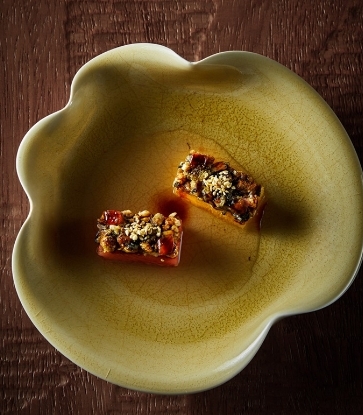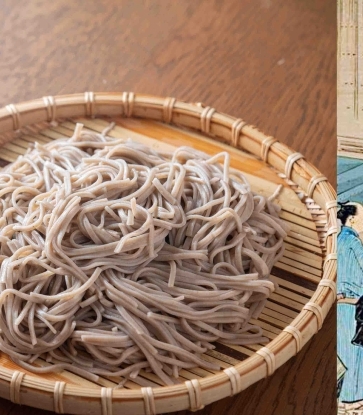"Only with the best rice, Sushi can be named as Sushi." - Japanese gourmet Kitaōji Rosanjin said in his book "Cooking Kingdom"
Those seasonal and vibrant seafoods like kohada, tuna, conger eel, sea urchin can easily take the stage, stealing your attention from the underneath treasure. But first-class vinegar rice is weighty and magical enough to turn fatty tuna into a refreshing dish, without leaving any greasy trace in the mouth.
Rice is Japanese’s staple food and the essence of Japanese cuisine. It is served as the finale in the haute Kaiseki Ryori. Rice is the soul of an eel specialty restaurant, and an exquisite delicacy on an ordinary family’s dining table. In general, Japanese people are able to tell the different favours of white rice and brown rice, the latter usually paired with pickles or curries. Harking back to the Edo era, the Nigiri sushi was just a common fast food filling the hungry stomach of the labour class who only required (cooking) speed and food quantity – 3 to 4 times bigger than today’s sushi. After the WWII, sushi stalls modernised their design from offering “Tachi-gui” (standing up) food to “seating” meal. Sushi, now pairing with wine rather than tea, “shrunk” to the non-fulfilling mini version.
Evolving from its rough past to modern refinement, the downsized sushi highlights the significance of Shari. “A chef with no confidence to cook decent rice … is not qualified as a sincere and hospitable chef.” asserted Kitaōji Rosanjin.
READ MORE: A Guide To Sushi Beyond Fatty Tuna

Establishing his very own belief in the sushi he serves, Chef Kin from Sushi Wadatsumi has honed his Nigiri sushi making techniques for 20 years. “The texture and seasoning of the shari express the chef’s thought, as well as reflecting the prevailing guest preference,” he adds that the whole process of making shari, from the selection of rice, water and vinegar to the cooking is crucial to the flavour of the shari. It’s just similar to bread making in western fine dining.

Sushi Wadatsumi mixes crispy Hokkaido Nanatsuboshi rice and aromatic Yamagata Rice to make vinegared rice, yet it takes more effort to cook light and fluffy rice. The meticulous chef handpicking only rice aged for 4 to 5 months requests a local rice mill? to grind the rice every 3 to 4 days. This rice will then be cooked with his ultimate choice of soft water from Kagoshima hot springs. Chef Kin-san blending in Kohaku rice vinegar to dilute the acidity creates the restaurant’s refreshing shari, a “universal” one which is perfect to pair with shiromi, akami and shellfish.
READ MORE: The Beauty of Restoring Dinner Plates with the Japanese Art of Kintsugi

The long time 3 Michelin star Sukiyabashi Jiro’s master chef Ono Jiro featured in the documentary "Jiro Dreams of Sushi" believes that perfect shari accounts for “60%” of the successful making of sushi. Mitsuhiro Araki, master chef at Hong Kong’s Michelin one star restaurant The Araki considers that shari constitutes “80%” of the achievement. He describes shari as the “sun” and seafood as the “moon”. "The brighter the sun is, the more lustrous the moon will be." Following his own philosophy, he only selects “Mizubasho” Koshihikari rice with limited harvest, produced in Kawaba Village, Gunma Prefecture. Aging the rice for 3 to 6 months, he only requests the rice mill to grind the rice before he has to cook it. The aged rice with the sweetness and texture becomes a great match to the sake lees red vinegar which he proudly ages for at least a year. The prefect acidity, in his opinion, should be gentle yet with a subtle tingling. “This is the way to bring out the hidden umami of fish ingredients.”
READ MORE: First Day We Got Our Stars: Mitsuhiro Araki of The Araki
Yoshiharu Kakinuma, executive chef of Michelin three star restaurant Sushi Shikon also chooses sake lees red vinegar to make shari. He commissions a Japanese rice sommelier to specially blend several kinds of Kyoto-grown white rice. With his favourite vinegar, the shari made is in one piece, separate and non-sticky with delightful acidity. The restaurant’s vinegar rice impeccably carries out the chef’s impromptu ideas to pair with sea bream marinated with pickled sakura or smoke masu salmon.
READ MORE: Sushiyosi's Hiroki Nakanoue: "Sushi Is My Gateway To The World"
Photos for Sushi Wadatsumi taken by Moo Hung.





















